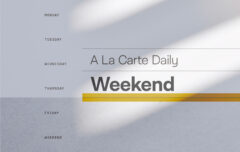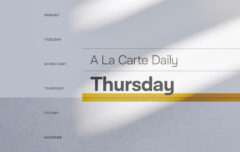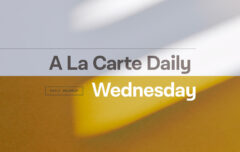Do you remember learning to do long division back when you were in grade school? It was probably fourth or fifth grade when we learned to do it. It was a long and laborious process and one that, even in my day, seemed irrelevant. After all, we all had calculators and we knew that they could do it quickly and easily. With the tapping of a few buttons we could get our solution and it would be correct every time. Kids today can probably make an even better argument that division is best handled by computers or calculators. I’ve little doubt that once most of them are out of school they never do long division again.
In case you’ve forgotten, here’s a good step-by-step example of long division in operation (drawn from Wikipedia).
950 divided by 4:
1. The dividend and divisor are written in the long division tableau:

Now instead of dividing the whole dividend (950) by the divisor (4) we will simply divide each digit of the dividend by the divisor, one at a time, starting from the most significant (leftmost) digit:
2.The first number to be divided by the divisor (4) is the leftmost digit (9) of the dividend. Ignoring any remainder, we write the integer part of the result (2) above the division bar over the leftmost digit of the dividend.
Since we ignored the remainder, though, we have not accounted for the leftmost place entirely. That is to say: 4 × 2 is merely 8, and the relevant digit of the dividend was 9. Thus we subtract 8 from 9, yielding the remainder 1, to tell us how much of the leftmost place remains unaccounted for.

3. We “bring down” this unaccounted-for remainder from the leftmost place (1) then bring down the next digit of the dividend (5) and place it to the right of the remainder to create a new bottom number (15).

4. Next we repeat steps 2 and 3, using the newly created bottom number (15) as the active part of the dividend, dividing it by the divisor (4) and writing the results as before above and under the next digit of the dividend.

5. We repeat step 4 until there are no digits remaining in the dividend. The number written above the bar (237) is the quotient, and the result of the last subtraction is the remainder for the entire problem (2).

The answer to the above example is expressed as 237 with remainder 2. Alternatively, one can continue the above procedure to produce a decimal answer. We continue the process by adding a decimal and zeroes as necessary to the right of the dividend, treating each zero as another digit of the dividend. Thus the next step in such a calculation would give the following:

I’m sure you remember this kind of problem and solution. You probably remember hating having to go through all the bother. You probably remember, as I do, trying to get out of it. The argument my teachers made, and the argument I’m sure teachers continue to make today, is that doing the onerous task of long division not only teaches us how to do it on our own for those rare occasions that a computer or calculator or cell phone isn’t handy, but it also teaches how division works. By going through each step we see how it works–we learn not only the solution, but we also learn the process of solving it. It isn’t fun, but neither is it meant to be. It’s an educational process.
Since the release of my book I’ve done quite a few written and radio interviews and I’ve spoken to many people about the book face-to-face. A question that gets asked often is what I hope people will take from the book—what are one or two things that I really want people to learn. And this is where the parallel to long division comes in. If there is just one thing I want people to take away from the book it’s the categories of discernment. If Christians can read the book and begin to think in the black and white terms of discernment, I’ll be well pleased. Just knowing that discernment is an expectation for all of us is valuable knowledge and something many Christians really do not understand.
And second to that, I want people to realize that discernment is something we are responsible for as individuals. We cannot simply leave discernment to the experts. Rather, we each need to learn to discern and we each need to grow in the skill of discernment. Like using a calculator for division, we can rely on others to give us the bottom line. But like doing long division, it is far better to do the work ourselves and to ensure we understand how to discern. The theological equivalent of using a calculator may be just Googling what John Piper or John MacArthur says about a certain topic and taking that word as law. It may be asking a parent or pastor and accepting what they say without further thought. We are all prone to want to get to the final tally without going through the intervening steps.
But like the kid who cheats by using a calculator, we cheat ourselves if we do not do the difficult work of discernment. As we discern what is good and what is evil, what is right and what is wrong, we train ourselves to think as Christians and we train ourselves to really understand what discernment is. We make sure that we understand the difficult business of discernment–not only the end result but the process of getting there.










